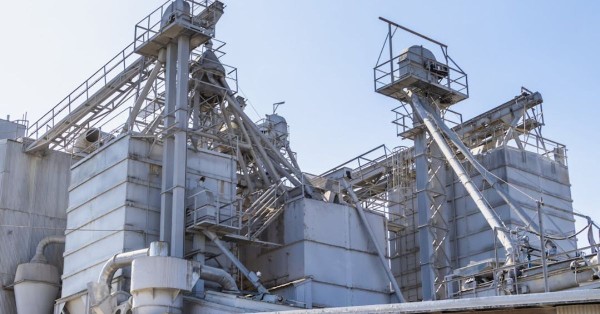Every morning, our world wakes up to the realities of climate change. As this has become a ritual these days, industries are being called upon to step up and do their part in reducing carbon emissions.
Cement companies, known for their hefty contribution to industrial emissions, find themselves in the spotlight as well. According to the IEA, emissions from cement factories are stubbornly high. Hence, these factories need our special attention as we plan to combat carbon emissions and climate change.
Why Cement Companies Should Care About Carbon Management
Here’s an interesting fact for you: cement production causes about 8 percent of global carbon dioxide emissions. Crazy, right? If you’ve ever wondered why everyone’s suddenly talking about carbon management, it’s because we’re running out of time to curb global warming.
Cement companies can play a significant role in this battle. Their cement factories can end up becoming the heroes that help save the planet.
However, it’s not just about being a hero; carbon management isn’t just a noble cause but a business necessity today. Regulations are tightening, customers are getting pickier, and the market is tilting toward sustainability.
The cement companies that don’t jump on the carbon management bandwagon might find themselves left in the dust. After all, how on earth do you plan on explaining to your climate-conscious customers that you chose not to help with carbon management?
Understanding Industrial Carbon Management
Alright, let’s break this down. What exactly is industrial carbon management, and why does it matter to your cement company?
Simply put, it’s all about reducing the carbon emissions produced during the cement manufacturing process. Since cement production is energy-intensive, focusing on managing carbon output is essential.
Now, you might be thinking: how do we actually do this?
Well, the key lies in reducing emissions at every stage of production. From using alternative raw materials to switching to low-carbon fuels, there’s a lot that can be done.
Most importantly, these efforts aren’t just good for the planet; they’re good for your bottom line too. Cutting down on carbon emissions often means cutting down on energy costs, which is a win-win for everyone.
Embracing Carbon Capture Technologies
If you haven’t yet explored the wonders of carbon capture technology, now’s the time. As a matter of fact, carbon capture tech can reduce CO2 emissions by up to 60 percent.
Carbon capture technology works by trapping carbon dioxide before it leaves your facility. Instead of letting it float away and contribute to global warming, you can capture it, store it, and use it to create new products. It’s like turning a bad situation into something good.
According to Atoco, this technology can greatly reduce the amount of carbon dioxide released into the atmosphere. The best part? Carbon capture tech is constantly evolving. Whether you’re looking into post-combustion capture or pre-combustion capture, there’s a solution for every cement company out there.
Switching to Alternative Fuels
Cement production gobbles up a lot of energy, and traditionally, fossil fuels have been the go-to choice. However, right now, the times are changing, and so are the fuel options for your cement factory.
Have you considered switching to alternative fuels? It might sound like a hassle, but trust us, it’s worth it.
Using alternative fuels, such as biomass or waste-derived fuels, can significantly reduce your cement company’s carbon footprint. Plus, these fuels often come from renewable sources, meaning you’re not just cutting down on emissions; you’re also reducing your reliance on non-renewable resources.
Of course, making the switch requires some investment, but it’s an investment in the future.
Enhancing Energy Efficiency in Cement Production
Energy efficiency might not sound as glamorous as carbon capture, but it’s just as important. In fact, it’s one of the easiest ways to start reducing your industrial emissions right now.
Think of it as tightening up your cement plant’s operations so that you’re using less energy to get the same or better results.
There’s no shortage of strategies to enhance energy efficiency in cement production. From upgrading equipment to optimizing production processes, every little bit helps.
Cementing a Sustainable Future
The road to sustainability for your cement factory might seem challenging, but it’s filled with opportunities to innovate, collaborate, and make a positive impact. Whether your cement factory is embracing carbon capture technologies or enhancing energy efficiency, every step you take brings you closer to a greener future.
Remember, the world is watching, and the demand for sustainable practices is only going to grow. By taking action now, your cement company can be a leader in the industry, setting the standard for carbon management.
Disclaimer: The information presented in this article should be independently verified for accuracy. We strongly recommend consulting with experts before making any decisions based on this content. Our channel is not liable for any consequences resulting from the use of this information.
